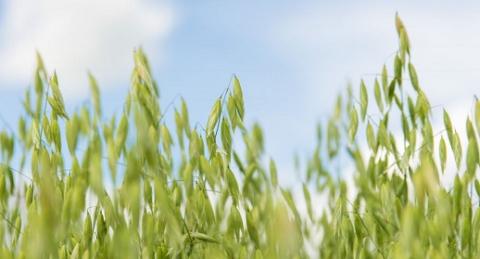How to manage weeds in arable rotations
Use the rotation to reduce weed burdens
Winter vs spring oats
Usually harvested after barley but before wheat, winter oats fit into the rotation well. They can also increase following wheat yields (by up to 15%) due to take-all reductions. However, winter oats can struggle in fields with large grass-weed populations, especially if herbicide resistance is present.
Spring oats add flexibility to the rotation. The spring-crop yield penalty is also relatively small in oats, compared with the penalty in wheat and barley. Additionally, spring oats provide an opportunity to use a long stale seedbed, as part of a black-grass control strategy. However, in some areas, ground conditions may not allow regular spring sowing.
Varietal choice
Whether organic or conventionally grown, varietal choice makes a difference to weed management. Generally, taller varieties are better at out-competing weeds. However, some modern shorter varieties have growth habits that help them supress weeds. Husked oats are also more competitive than naked-oat varieties.
Diverse rotations
In organic systems, more diverse rotations – including leys – help reduce weed burdens. During any ley phase, when legumes (typically grass/clover mixes) are grown, many weeds, such as creeping thistles and docks, can be controlled by mowing/topping before flowering. For localised areas, weeds can by removed by hand. Turning over arable fields to grass is also a highly effective way to reduce black-grass burdens – as its seed is relatively short-lived.
How to make the most of grass leys in the arable rotation
Make the most of stale seedbeds
Delayed autumn drilling provides more opportunity to form a stale seedbed. Generally, winter oats can be sown up to mid-October without a yield penalty.
Achieving good and rapid establishment helps the crop to out-compete early weed growth. It always better to drill later into a good seedbed than early into a poor one. In addition, due to increased soil moisture, pre-emergence herbicides generally have better efficacy with later sowings.
The use of spring oats as part of a black-grass control programme is effective. However, seed-rates must be increased if weed burdens are high, to help the crop out-compete emerging black-grass.
How drilling date affects arable weed populations
Consider mechanical weeding options
Mechanical weeding is most effective if done early (November for winter oats) – before weeds establish. This is particularly true for black-grass. If the crop is strong enough to withstand it, use a spring-tine weeder to remove weeds. Depending on soil conditions, aim to achieve several passes before the onset of winter. After the crop begins to cover the inter-rows, use an inter-row hoe (if necessary) until the canopy nearly closes. Mechanical weeding may provide an extra benefit to the oat crop by mineralising nitrogen.
Chemical control options
Limited herbicides and resistance issues (in some populations) make weed control in oats a challenge. In addition, application rates and/or latest timing of herbicides may be different in oats, compared with other cereals.
Be aware that the use of certain pre-emergence products may restrict the choice of herbicides available post-emergence.
Always refer to the product label for specific usage restrictions and guidance (including tank-mixing and sequencing options).
Plant protection product on-label approvals
Plant protection product EAMU (off-label) approvals
Pre-emergence herbicides
September 2023 update
Diflufenican has not been granted an extension of authorisation for minor use (EAMU) for oats.
Currently, there are no pre-emergence herbicides authorised for use in oats.
Industry is working to secure a suitable authorisation(s) to provide pre-emergence options for growers.
Autumn post-emergence herbicides
|
Active ingredient |
Broad-leaved weed control |
Annual grass-weed control |
Authorised in winter oats |
Authorised in spring oats |
|
Carfentrazone-ethyl |
Yes |
|
Yes |
Yes |
|
Carfentrazone-ethyl + mecoprop-P |
Yes |
|
Yes |
Yes |
|
Isoxaben |
Yes |
|
Yes |
Yes |
Spring post-emergence herbicides
The information in this section was last reviewed in 2016. It is currently (2023) being reviewed.
Spring herbicide options tend to target broad-leaved weeds. Compared with other cereals, tank-mixing options are limited and crop damage may occur.
Active ingredients
- 2,4-D*
- 2,4-D + MCPA*
- Amidosulfuron
- Clopyralid
- Clopyralid + florasulam**
- Clopyralid + florasulam + fluroxypyr
- Dicamba + mecoprop-P
- Dicamba + MCPA + mecoprop-P
- Dichloprop-p + MCPA + mecoprop-p
- Florasulam
- Florasulam + fluroxypyr
- Fluroxypyr
- MCPA
- Mecoprop-P
- Metsulfuron-methyl
- Metsulfuron-methyl + thifensulfuron-methyl*
- Metsulfuron-methyl + tribenuron-methyl
- Thifensulfuron-methyl + tribenuron-methyl*
- Tribenuron-methyl
*Authorised in winter oats only
**Authorised in spring oats only
Pre-harvest herbicides
Glyphosate can be used pre-harvest on oats to control perennial weeds and to even up ripening for ease of harvesting.



